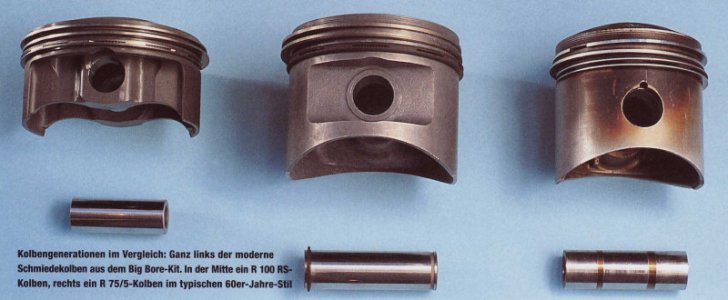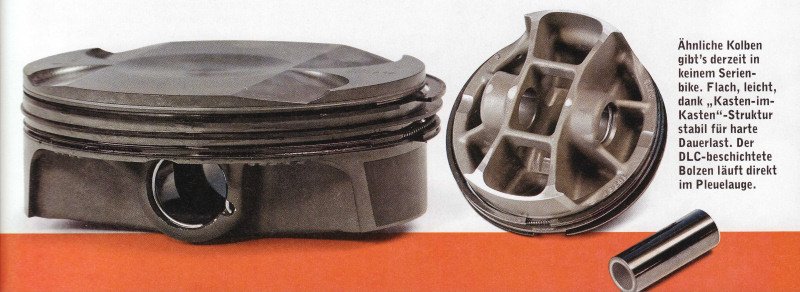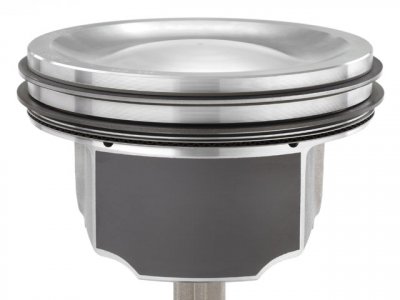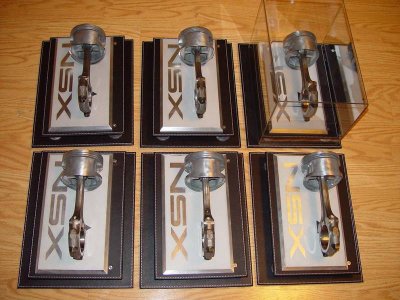I bought Wiseco pistons from ScienceOfSpeed.
I measured 8g between the lighter and heavier piston.
I measured 90.418-90.427 between the lagest and smallest piston.
My bore was +0.07mm more than each piston : 90.49-90.50
Where I am not happy, it's the oil consumption.
I gap the 1st rings to 0.45mm
I gap the 2nd rings to 0.50mm
The 3rd rings gap was 0.60-0.70mm from factory !!! it's very high, normaly it's 0.30mm
I think my consumption problem is the 3rd rings gap.
Top Ring = 90.5 / 25.4 x .0050” = 0.0178 = 0.45mm
2nd Ring = 90.5 / 25.4 x .0055” = 0.0196 = 0.50mm
Some feedback, I hope it helps:
For some background: we have built 53 engines to date (the 53rd was finished, installed, and tuned yesterday). The piston model that you have has been developed after trying several different manufactures, alloys, and designs including some mentioned on this thread. The model you have is by far our best performing on terms of reliability, consistency, and oil consumption.
In terms of reliability, we have nearly 80 sets in the field of the model you have including ~30 we have used in house. In terms of consistency, I went through a stack of the 10 last sets we've sold, and the maximum variance from the lightest to heaviest piston is 1.4 gram, and that was on a stroker piston with additional milling on each piston for weight reduction. On the 90.5:1 piston you have, the maximum variance I could find was 1 gram. This information is listed in term of bare piston mass after manufacturing - which is inspected on each piston made. The accessories other than rings are very tight - much less than 1 gram from one to another. How are you measuring mass? Are you including the rings in the weight? If so, you need to include the same set of rings with each piston set - as the rings will vary (but this still doesn't explain 8 grams). Lastly, on oil consumption, these pistons are by far the best compared to any other piston we have used including JE, CP, and Arias. You said you weren't happy with oil consumption, but don't indicate what your oil consumption is. A typical new engine will use ~ 1 qt in the first 1000 miles and taper down to less than 1/4 qt every 1000-2000 miles (forged pistons will always exhibit higher than factory oil consumption because of the growth characteristics - compared to the factory cast hypereutectic piston - the forged piston has a greater coefficient of thermal expansion making them smaller in the cylinder bore until they reach operating temperature). It is very important that the third oil ring be installed per manufacture's requirements with the oil ring expander butting together, not overlapped & the rails positioned a minimum 90 degrees from top to bottom.
A couple things I saw from your post:
- you cannot measure a coated piston the way you describe. The buildup of the coating varies approximately .001-.002", and this is not the true size of the piston. You state that the bore did not exceed 90.5mm, however, did you verify this? Customers have made the mistake of measuring the piston, then adding piston-wall clearance when in fact the piston has the clearance already built in (ie. .003" per side less than the spec of 90.5mm). This would result in the piston-wall clearance being double - .006"/side. Adding the coating will also make the piston-wall greater than what is recommended.
- please explain how you did your measuring of mass - I don't see how 8 gram is possible
- please verify the installation of the oil ring set - the oil ring rails should be at least 90 degrees apart and the expander must be properly butted, not over lapped
I hope this feedback helps. I can assure you have years of experience, you have the best of what we have use. Please feel to drop us a line if you have any questions on the above.
cheers,
-- Chris










